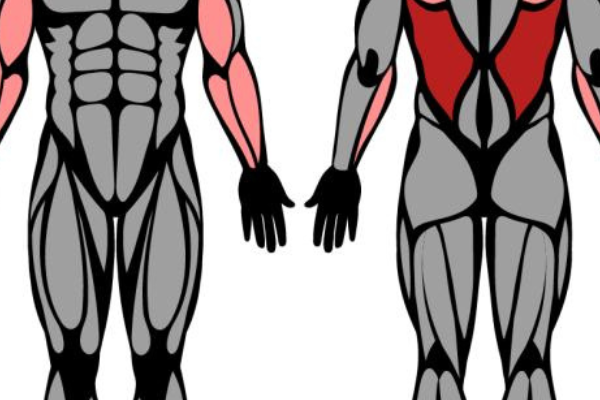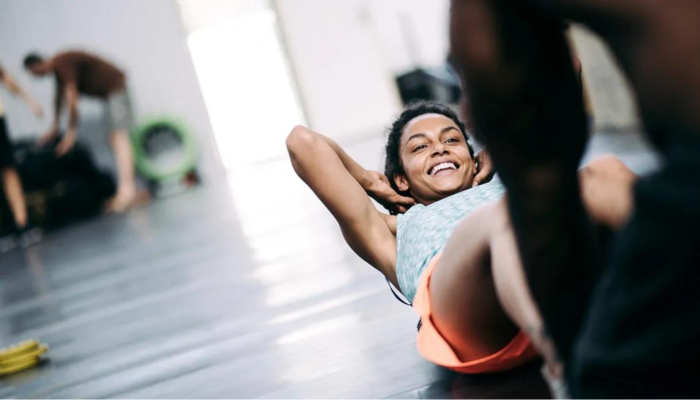
Whether your goal is to lose weight, build muscle, improve heart health, or simply feel better, choosing the right exercises is key to reaching your fitness goals. With so many options to choose from, it can be overwhelming trying to create the perfect workout routine. This comprehensive guide will walk you through how to select exercises that align with your specific goals and fitness level.
Assessing Your Goals
Before determining which activities to incorporate, take some time to clearly define what you want to accomplish. Ask yourself the following questions:
What is your primary objective?
Are you looking to slim down, gain strength, improve athletic performance, rehabilitate an injury, or maintain overall wellbeing? Having a clear focus will make it easier to develop an effective regimen. Those seeking weight loss would emphasize different exercises than someone wanting to boost speed and agility for sports.
How much time can you dedicate to working out?
The duration and frequency of your workouts should align with your schedule and level of commitment. Generally, the American College of Sports Medicine recommends getting 150 minutes of moderate aerobic activity or 75 minutes of vigorous activity each week, alongside strength training at least 2 days per week.
What is your current fitness level?
Selecting exercises that match your baseline fitness will help minimize injury risk while still offering an appropriate challenge to spur continued improvement. Be honest about your capabilities so you don’t over- or under-estimate yourself.
Do you have any injuries, medical conditions, or physical limitations?
It’s important to understand restrictions that need accommodation to keep from exacerbating issues or risking new damage. Common circumstances like arthritis, heart conditions and low back pain can dictate what movements may or may not be suitable. Consult your physician if unsure what activities are safe or can be modified.
Types of Exercise
Once your objectives and situation are clearly defined, familiarize yourself with the most effective training modalities for those goals while accounting for any limitations.
Cardiovascular Exercise
Aerobic, or “cardio”, exercise entails rhythmic movements using large muscle groups that cause your heart rate and breathing to increase. This helps develop cardiovascular fitness for improved stamina and endurance. Recommended forms like running, swimming, cycling and high intensity interval training are beneficial for those seeking to burn calories and lose fat. Start slowly, especially if new to exercising, gradually increasing duration from 30 minutes toward a 60 minute session 3-6 days per week.
Strength (Resistance) Training
In addition to cardio, strength training is imperative for shaping, firming and defining muscle tissue throughout the body. Using resistance from bodyweight, free weights, resistance bands or weight machines, consistently challenge muscles to adapt and become stronger. Those seeking a toned physique should perform 8-12 repetitions to muscular fatigue 2-3 days per week for each major muscle group: legs, hips, back, chest, shoulders and arms. Allow at least 48 hours rest between working the same muscles to avoid overtraining.
Flexibility Exercises
Stretching, yoga and foam rolling help improve mobility and range of motion around joints and connective tissues. Dedicate time for static stretches after cardio and use dynamic stretches during warm-ups. Focus on tight areas like hips, hamstrings and shoulders. This aids movement efficiency, reduces injury risk and decreases post-workout muscle soreness.
Balance and Coordination
Exercises improving control, stability and agility are extremely useful for older adults concerned with preventing falls. Balance requires integrating input from vision, inner ear and muscle movements. Tai chi, agility ladders and Bosu ball routines challenge that synchronization. Start with easier beginner drills, using support aids if needed, before progressing to more advanced activities.
Creating a Balanced Fitness Plan
When mapping out your workout schedule, be sure to take a holistic approach with a blend of cardio, strength and flexibility training that complements your abilities, limitations and targets.
Include All Three Major Types
Strive to incorporate cardio, resistance, and flexibility activities for comprehensive fitness development no matter your primary goal. Skipping strength training will blunt muscle tone despite ample cardio. Focusing solely on muscle boosting can lead to joint stiffness or mobility restrictions without stretching afterward.
Emphasize Specificity
Allot more time toward the exercises delivering the desired adaptations. Those seeking muscle gain would spend more time strength training than cardio training each week. Someone wanting better running economy would emphasize run-specific workouts but shouldn’t ignore resistance training for injury prevention.
Allow for Adequate Recovery
Hard exercise sessions cause microtears to muscle fibers and inflammation requiring 24-48 hours for optimum repair between working the same muscles. Schedule strength training, HIIT cardio, and high-mileage endurance sessions on alternate days. Easier cardio and flexibility workouts can be performed daily if desired.
Start Low, Go Slow
When taking up a new activity, progress gradually in terms of intensity, duration and frequency to allow your body to adapt without risking strain or injury. Build incrementally week-by-week instead of doing too much too soon. Be patient but persistent.
Best Exercises for Common Goals
Selecting appropriate activities aligned with your aims and fitness level typically yields the greatest improvements. Below are great exercise options those targeting specific goals.
Weight Loss Exercises
Creating a calorie deficit through exercise and diet produces weight loss but retaining calorie-burning muscle mass helps maintain results long-term.
– Burpee interval training
– Kettlebell training
– Rowing machine cardio
– Bodyweight workouts like push ups, lunges, planks which use body mass as resistance
– Rucking – walking/hiking outdoors with weighted backpack
Muscle Building Exercises
Triggering muscle protein synthesis requires challenging strength training that fatigues muscles using challenging loads progressively.
– Compound lifts like squats, deadlifts, bench press, pull ups, rows
– Isolation exercises like biceps curls, triceps extensions, lateral raises
– Using heavy weights and low repetitions primarily with ample rest between sets
Injury Recovery Exercises
Rehabilitation aims to restore range of motion, rebuild strength and reactivate muscles around affected joints using gradual progressive loading.
– Physical therapy incorporating gentle range of motion movements
– Light resistance training isolated to surrounding muscle groups
– Low-impact cardio like swimming, stationary cycling, elliptical machine
– Stretching and foam rolling exercises
Heart Health Exercises
Routine cardio exercise conditions heart muscle reducing risks of cardiovascular disease while improving stamina.
– Moderate intensity aerobic activity like light jogging, swimming, cycling, rowing, brisk incline walking
– Higher intensity interval training with alternating harder/easier periods
– Bodyweight circuit training routines performed consecutively with minimal rest periods
Optimizing Your Workout Routine
Fine tuning your regimen using smart exercise selection, sequencing and programming magnifies your results.
Order Movements Wisely
Sequence exercises moving from larger to smaller muscle groups and compound moves before isolation. For example:
1. Squats / Deadlifts
2. Bench Press / Bent Rows
3. Shoulder Press / Bicep Curls
Also alternate between push/pull movements to allow muscle groups to rest while working counterparts.
Modulate Volume and Intensity
Vary training stimuli week-to-week using tools like supersets, pyramids, drop sets and ascents preventing plateaus. Combine lighter, higher rep periods focusing on muscle endurance along with lower rep sessions emphasizing heavier strength efforts.
Periodize Plan Strategically
Periodizing cycles in phases using mesocycles builds physical capacity peaking for key events. Transition from higher volume general prep phases to lower volume, higher intensity specific prep phases culminating in a competitive peak phase.
Employ Forced Reps if Able
Using assisted and negative reps beyond failure when able enhances muscle fiber recruitment. Just be sure to maintain safe form and have spotter if lifting very heavy loads.
Adjusting for Injuries, Medical Conditions and Physical Limitations
Tailoring programs to accommodate underlying health issues ensures continued progress while avoiding potential harm.
Arthritis and Joint Issues
Minimize high impact activities placing excessive load on affected joints. Use lower resistance, higher reps along with plenty of warm-ups/cool-downs. Explore water based exercises to reduce weight-bearing demands.
Cardiovascular Conditions
Consult doctor about safe heart rate ranges. Emphasize lower intensity, longer duration workouts while monitoring perceived exertion levels closely. Allow longer, more frequent rest intervals as needed.
Diabetes and High Blood Pressure
Consistency helps manage glucose and BP fluctuations. Mix moderately intense resistance and cardio training to maximize blood sugar uptake into muscles. Stay well fueled and hydrated.
Back Conditions
Eliminate movements like deadlifts, good mornings and vertical pressing that overly compress spine. Brace core properly and maintain neutral alignments during lighter squats, rows and overhead pressing.
Previous Injuries
Avoid specific patterns likely to re-aggravate issue depending location. Reinforce area using stability exercises and work uninvolved movement planes first before cautiously progressing degree of challenge.
While every situation differs slightly, understanding exercise science principles tailored to your scenario offers optimal benefit regardless of starting point or parameters. Monitor your progress using objective metrics like weight, body fat percentage, strength gains, speed/power output, heart rate variability and sense of wellbeing. Remain consistent tracking data trends to determine effectiveness and adjust accordingly over time.
With a purposeful workout routine emphasizing activities aligned with your aims and current abilities, you equip yourself to accomplish fitness feats once seeming impossible. Stay patient through gradual progressions respecting natural growth timelines needed to manifest change. Maintain realistic expectations knowing results require commitment. But keep chasing your potential because the fulfillment awaiting at the finish line proves incredibly worthwhile.




